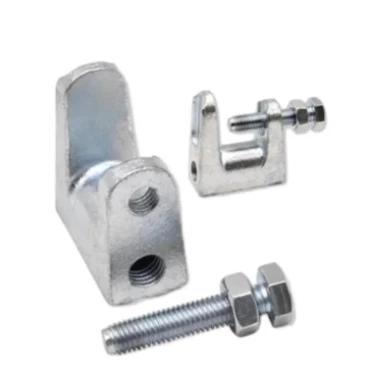नवम्बर . 08, 2024 19:06 Back to list
flat washer specifications
Understanding Flat Washer Specifications
Flat washers are integral components in various mechanical assemblies, playing a crucial role in distributing loads, reducing vibration, and preventing damage to surfaces. Their specifications can greatly influence the performance and durability of a joint or assembly. This article will delve into the key specifications of flat washers and their significance in engineering and construction applications.
Material Selection
The choice of material for flat washers is paramount, as it affects their mechanical properties and suitability for specific environments. Common materials include
1. Steel Widely used for its strength and durability, steel washers are often coated with zinc or other finishes to protect against corrosion. They are ideal for applications in dry environments but may require additional treatment in humid or corrosive conditions.
2. Stainless Steel Known for excellent corrosion resistance, stainless steel washers are preferred in environments where moisture, heat, or chemical exposure is a concern. The most common grades are 304 and 316, with 316 offering enhanced corrosion protection.
3. Plastic Nylon and other plastic washers are utilized in applications requiring non-conductivity and resistance to chemicals. They are lightweight and can be an excellent choice for electrical insulation needs.
4. Rubber Rubber washers provide excellent sealing properties and shock absorption, making them suitable for applications that require flexibility and vibration dampening.
Dimensions and Thickness
Flat washers are categorized by several key dimensions
1. Outer Diameter (OD) This is the overall size of the washer, which significantly influences its load distribution capability.
2. Inner Diameter (ID) The size of the hole in the middle of the washer, which must accommodate the shaft or bolt it is used with. A properly sized ID ensures the washer fits securely without slipping.
3. Thickness The thickness of the washer affects its strength and ability to distribute loads. Thicker washers can handle greater loads but may also increase weight and the overall profile of the assembly.
Standards such as ANSI B18.22.1 or ISO 7089 dictate the standard dimensions for flat washers, ensuring compatibility and interchangeability in various applications.
flat washer specifications

Load and Tensile Strength
Understanding the load capacity and tensile strength is essential for selecting the right flat washer for a given application. The material and thickness influence the washer's ability to withstand force without deforming. Manufacturers provide specifications that include minimum yield strength and tensile strength values, allowing engineers to determine the appropriate washer for their requirements.
Finish and Coating
The finish or coating of flat washers contributes to their performance in specific environments. Common finishes include
1. Zinc Plating Provides a protective layer against corrosion, enhancing the washer's durability in outdoor settings.
2. Black Oxide Offers a mildly protective finish that can reduce glare and improve corrosion resistance.
3. Galvanization A heavier coating process that provides robust protection against rust and chemical exposure, ideal for washers in harsh environments.
4. Anodization Primarily used for aluminum washers, this process enhances resistance to corrosion and wear.
Applications
Flat washers are extremely versatile and are found in applications ranging from automotive and aerospace to construction and electronics. They are used in assembly processes for machinery, furniture, and appliances, as well as in plumbing and electrical installations.
Some common applications include
- Fastening Used alongside bolts and screws to distribute loads evenly over surfaces, reducing the likelihood of damage. - Insulation Plastic or rubber washers serve as insulators in electrical applications. - Sealing Rubber washers provide watertight seals in plumbing systems.
Conclusion
Flat washers, while often overlooked, are critical components in various mechanical systems. Understanding their specifications—material selection, dimensions, load capacity, finishes, and applications—ensures that engineers and technicians can choose the appropriate washer for their specific needs. Proper selection leads to enhanced performance, safety, and longevity of the mechanical assemblies in which they are used. Thus, knowing the intricacies of flat washer specifications is essential for anyone involved in design or maintenance engineering.
-
The Ubiquitous Reach of DIN934 in Application Realms
NewsMay.16,2025
-
Exploring Different Bolt Types
NewsMay.16,2025
-
Cracking the Code of Sleeve Anchor Mastery
NewsMay.16,2025
-
Clamp Design Principles,Types and Innovations
NewsMay.16,2025
-
Artistry Inspired by the Humble Anchor Bolt
NewsMay.16,2025
-
A Deep Dive into Screw Types
NewsMay.16,2025


